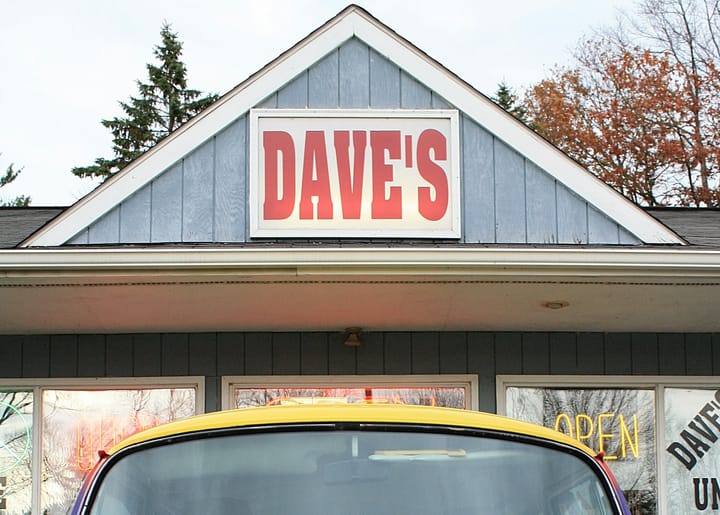How To Be An Expert In Very Smart Dumb Thinking

When it comes to marketing, the best ideas are often the dumbest. That might sound counterintuitive, but it’s true. In a world saturated with barely distinguishable campaigns, "dumb ideas" — those that break the mould and defy expectations — often shine the brightest.
Why Think Dumb?
We’re often told that to unlock creativity, we must take certain steps: walk more, spend time outdoors, sleep more, visit museums, fill our minds with culture, or learn a new skill. While these are all admirable activities that can help spark creativity, they aren’t for everyone. Plus, these activities often come with the baggage of feeling like you need to be sophisticated or "smart" to be creative.
Here’s the beauty of thinking dumb: it doesn’t require any of that. You don’t need to watch old black-and-white French films with subtitles, keep a journal, or grow a beard to scratch. Dumb thinking is incredibly accessible. It strips away the pressure of having to be "smart" or cultured. It’s about embracing a child-like curiosity, daring to be naive, and asking questions others might find ridiculous. The result? Fresh, innovative ideas that stand out precisely because they break free from conventional expectations.
This article will dive into how you can harness the power of “dumb thinking” to create attention-grabbing, target-crushing campaigns that genuinely work.
In this article, we’ll explore how you can adopt this mindset to create memorable and effective campaigns without special preparation or cultural know-how.
Okay, dumb-asses, let's go!
Key Strategies for Dumb Ideas That Work
To think dumb, you must be willing to embrace the unusual. Here are five ways ways to do that.
1. Unlikeliest Ambassador
One way to think dumb is to choose the most unexpected person to represent your brand. Instead of opting for a safe, predictable spokesperson, go for someone who defies all logic.
Example: Hostelworld, a brand known for its low-cost, budget-friendly accommodations, chose Mariah Carey, a famous diva known for her luxurious lifestyle, as their ambassador. In their campaign, Mariah Carey, initially appalled at the idea of staying in a hostel, quickly falls in love with its charm and features. This surprising choice created a striking contrast that shifted public perception of Hostelworld from low-quality to premium — all by leveraging the shock value of an unlikely advocate.
Takeaway: Sometimes, the most absurd match is the most effective. Choosing an ambassador who seems completely out of place can grab attention and change perceptions in ways a more conventional choice never could.
2. Unlikeliest Antagonist
Another dumb strategy is to use an unexpected antagonist to highlight a problem. This can help make a point in a memorable, humorous, and impactful way.
Example: Danish internet provider Stofa used "Grandma Hackers" to promote its Safe Surf program. Knowing that many Danes, especially teens, didn’t take cybersecurity seriously, Stofa demonstrated how easy it is to fall victim to hacking by teaching grandmothers — a group stereotypically seen as having little tech know-how — to hack their grandkids. Within hours, these unlikely hackers had successfully breached their grandchildren’s accounts, proving how vulnerable people are online.
Takeaway: Use humour and surprise by flipping conventional roles. By making the least likely characters (grandmothers) the antagonists, Stofa grabbed attention, personalised the issue, and made cybersecurity a talking point among Danish families.
3. Dumbest Alternative
Presenting a ridiculous alternative solution to a problem can often more effectively spotlight the real issue than any serious campaign.
Example: The German island of Sylt faced a transportation bottleneck due to a single-track railroad. Instead of merely complaining or launching a traditional campaign for infrastructure investment, they created "Catapult Air," a fictional airline that proposed to launch people to the island via catapult. This absurd idea quickly gained attention, embarrassing local politicians to take the real problem more seriously.
Takeaway: Sometimes, you need to highlight a real issue by proposing a laughably extreme alternative. It draws attention, engages the audience, and makes the underlying problem impossible to ignore.
4. Dumbest Place to Put It
Promoting your product in a completely counterintuitive context can be another great way to think dumb.
Example: Sargento, a cheese brand, wanted to highlight its aged cheeses. Instead of following the usual routes, they created “The World’s Slowest Pizza Delivery.” They promised to deliver pizzas topped with their aged cheese — but only after the cheese had fully aged, which could take 4 to 18 months! This campaign turned pop culture on its head and cleverly emphasized the ageing process and the quality of their cheese.
Takeaway: Use irony and juxtaposition to create intrigue. By promoting aged cheese through a painfully slow pizza delivery, Sargento turned a perceived negative (waiting) into a unique selling point (quality).
5. Embrace Bad Behavior
Sometimes, embracing undesirable consumer behaviour can be better than avoiding or condemning it.
Example: Diesel, a clothing brand, knew that some customers were "wardrobing" — buying clothes, wearing them once, and returning them for a refund. Instead of fighting this trend, Diesel leaned into it. They launched a campaign encouraging customers to “wear their tags out” to get into exclusive events. This creative twist turned a negative behaviour into a brand-positive action and resulted in a 24% increase in sales.
Takeaway: When you can’t beat them, join them. Embracing what others might see as a problem can sometimes turn a negative into a compelling marketing strategy.
Recap
- Hostelworld’s Mariah Carey Campaign: Leveraged an unlikely ambassador to change brand perception.
- Stofa’s Grandma Hackers: Used unexpected antagonists to make cybersecurity a national conversation.
- Sylt’s Catapult Air: Highlighted a real problem with a ludicrous alternative to provoke political action.
- Sargento’s Slow Pizza Delivery: Promoted the unique value of aged cheese by using irony.
- Diesel’s Wardrobing Campaign: Embraced a consumer trend to drive engagement and sales.
These campaigns succeeded by thinking dumb, proving that unconventional ideas can work wonders.
Summary
Thinking dumb is about breaking free from the usual rules of creativity and daring to try the unconventional. As we’ve seen, these ideas can grab attention, change perceptions, and drive real results. So, next time you’re brainstorming for your next campaign, don’t be afraid to think a little dumb — it might just be the smartest move you make.



